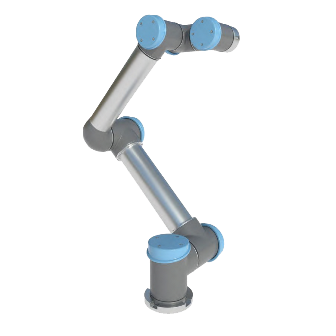Screwdriving is a common process involved with assembly applications. Many different products require this fastening process in order to be fully assembled. While this process is necessary it is one of the least desirable for workers as it is highly repetitive and monotonous. Not to mention it can also be hazardous with repetitive motions that can lead to musculoskeletal disorders like carpel tunnel syndrome. Fortunately, screwdriving can be automated with industrial robots.
Articulated robots have been the main source of robotic automation in the past. Their speed and accuracy can optimize the assembly process. The FANUC LR Mate 200ic is ideal for screwdriving automation. However, there is a new type of robot being deployed for screwdriving automation and that is the collaborative robot.
Collaborative robots are bringing a more flexible solution to robotic screwdriving than other types of robots. Cobots, like the Universal UR5, come already equipped with built-in force sensors allowing screws to be inserted with the correct force and precision for every part. Most traditional robot manipulators are not built with force sensors and must be integrated with them in order to automate such applications. Robotic force sensors are one of the many safety features of collaborative robots that allow them to operate around people without barriers. Recently robotic users have discovered that this very safety feature of cobots makes them ideal for automating force sensitive tasks.
Collaborative robotic manipulators are ideal for automating screwdriving processes that involve a high mix of parts in small batches. Traditional industrial robot arms are more cost-effective for automating repetitive, high volume operations due to their installation and programming time. Cobots on the other hand, allow for quick setups and programming. Many collaborative robots can be up and running within just a few hours of delivery. Intuitive hand guidance programming allows the FANUC CRX-10ia/L to learn a new application within minutes. Collaborative robots can be programmed by moving the robotic manipulator through the way points of an application. The intuitive nature of collaborative automation provides a shallow learning curve and means anyone can operate a collaborative robot.
Collaborative robots also require less space than most traditional industrial manufacturing robot arms. Not only are cobots compact and light weight but they do not require the same safeguarding equipment as others which reduces their overall footprint. Their many safety features means they do not require fencing, area scanners, etc. They can safely operate around and with workers. With their size they can easily operate in tight spaces without interference from peripherals. They can also be moved around production floors to fill in where needed.
Automating screwdriving applications with collaborative robots frees workers from undesirable tasks and allows them to focus on more value adding ones. Companies can utilize the full capacity of their workforce while cobots are used for mundane processes like screwdriving. Cobots can efficiently perform screwdriving over and over ensuring consistent product quality. They will not tire, lose concentration, or become injured allowing for higher productivity and better quality. Ultimately implementing collaborative robots to automate screwdriving will optimize assembly operations.
Robots Done Right |
Used Robot Sales |
Automating Screwdriving Applications with Cobots

Robots Done Right is the place to start when it comes to used robots. Contact us if you are interested in buying or selling your used robot.